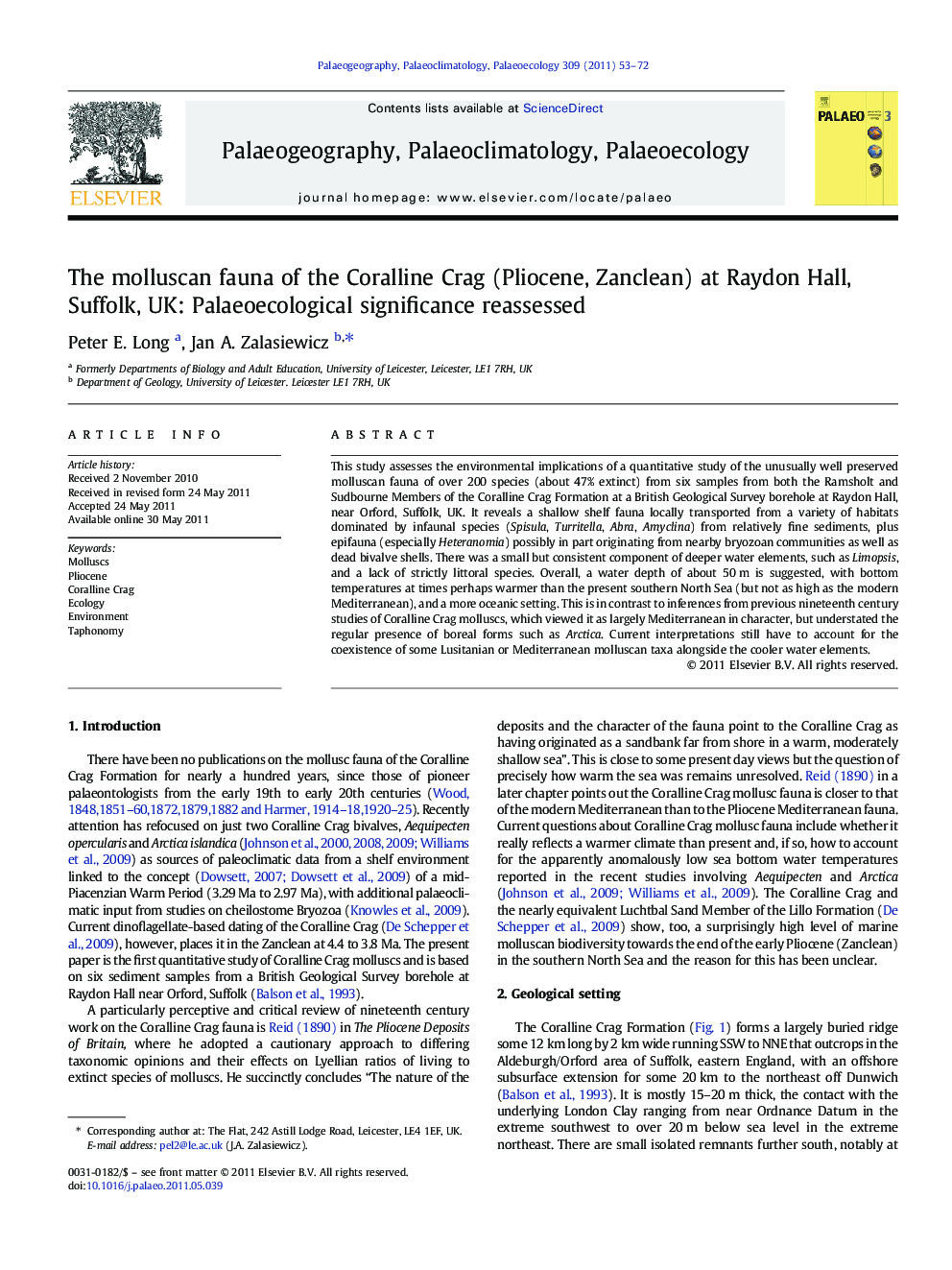| Article ID | Journal | Published Year | Pages | File Type |
|---|---|---|---|---|
| 4467172 | Palaeogeography, Palaeoclimatology, Palaeoecology | 2011 | 20 Pages |
This study assesses the environmental implications of a quantitative study of the unusually well preserved molluscan fauna of over 200 species (about 47% extinct) from six samples from both the Ramsholt and Sudbourne Members of the Coralline Crag Formation at a British Geological Survey borehole at Raydon Hall, near Orford, Suffolk, UK. It reveals a shallow shelf fauna locally transported from a variety of habitats dominated by infaunal species (Spisula, Turritella, Abra, Amyclina) from relatively fine sediments, plus epifauna (especially Heteranomia) possibly in part originating from nearby bryozoan communities as well as dead bivalve shells. There was a small but consistent component of deeper water elements, such as Limopsis, and a lack of strictly littoral species. Overall, a water depth of about 50 m is suggested, with bottom temperatures at times perhaps warmer than the present southern North Sea (but not as high as the modern Mediterranean), and a more oceanic setting. This is in contrast to inferences from previous nineteenth century studies of Coralline Crag molluscs, which viewed it as largely Mediterranean in character, but understated the regular presence of boreal forms such as Arctica. Current interpretations still have to account for the coexistence of some Lusitanian or Mediterranean molluscan taxa alongside the cooler water elements.
► Environmental datafrom Pliocenemolluscsof the Coralline Crag Formation, UK. ► Overall water depth about 50 m. ► More oceanic than today's southern North Sea and higher bottom temperatures. ► Cooler than the present Mediterranean. ► Nineteenth century studies overstated Mediterranean links, underplayed the boreal aspects.
